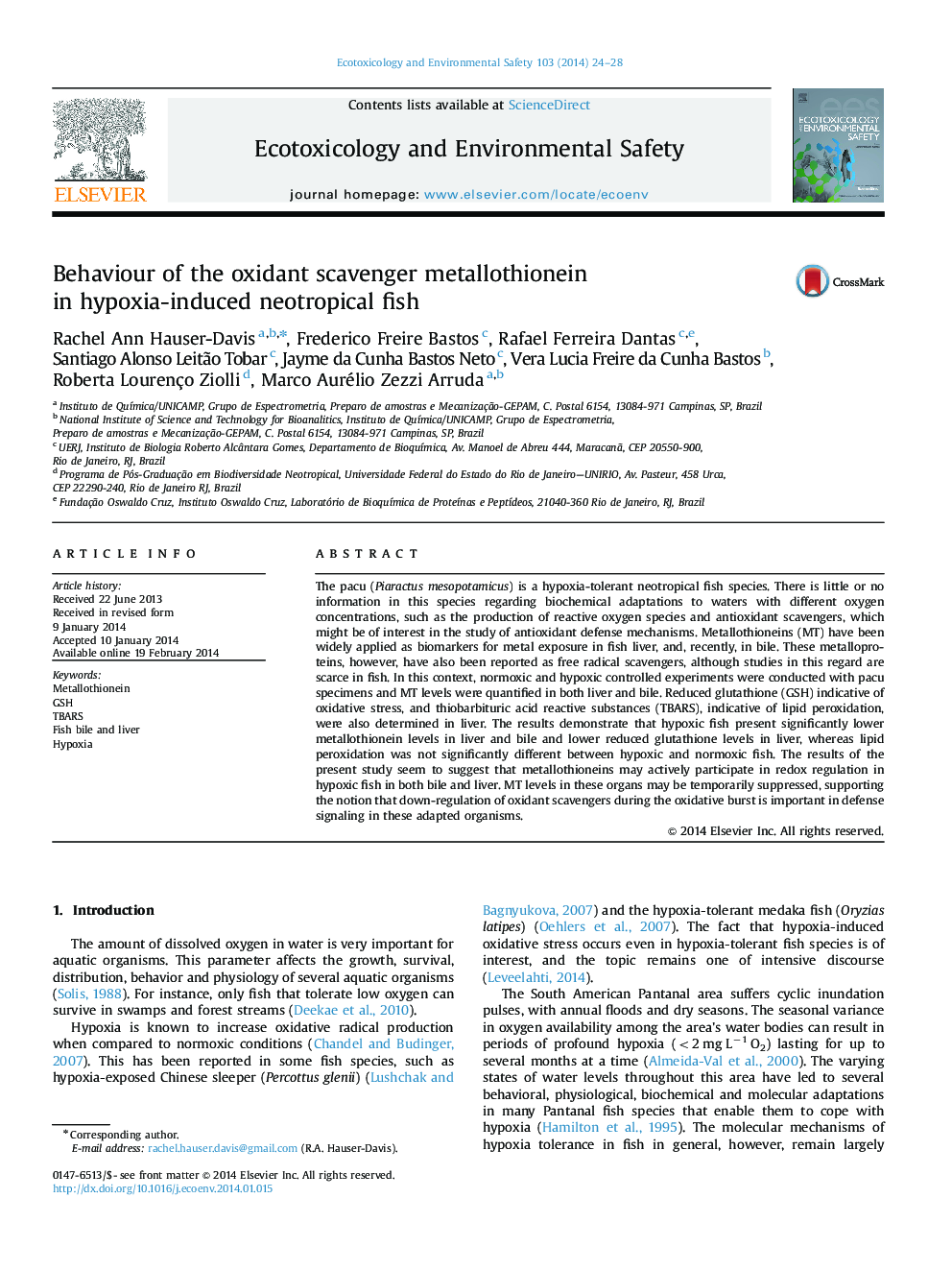| کد مقاله | کد نشریه | سال انتشار | مقاله انگلیسی | نسخه تمام متن |
|---|---|---|---|---|
| 4420190 | 1618960 | 2014 | 5 صفحه PDF | دانلود رایگان |
• Metallothioneins (MT) were quantified in liver and bile in hypoxia-tolerant pacu.
• GSH and TBARS were quantified in liver.
• Hypoxic fish showed significantly lower MT and GSH in liver and bile while TBARS was not significantly altered.
• MT may thus actively participate in redox regulation in hypoxic fish.
• MT levels may be temporarily suppressed, supporting oxidative burst evidence.
The pacu (Piaractus mesopotamicus) is a hypoxia-tolerant neotropical fish species. There is little or no information in this species regarding biochemical adaptations to waters with different oxygen concentrations, such as the production of reactive oxygen species and antioxidant scavengers, which might be of interest in the study of antioxidant defense mechanisms. Metallothioneins (MT) have been widely applied as biomarkers for metal exposure in fish liver, and, recently, in bile. These metalloproteins, however, have also been reported as free radical scavengers, although studies in this regard are scarce in fish. In this context, normoxic and hypoxic controlled experiments were conducted with pacu specimens and MT levels were quantified in both liver and bile. Reduced glutathione (GSH) indicative of oxidative stress, and thiobarbituric acid reactive substances (TBARS), indicative of lipid peroxidation, were also determined in liver. The results demonstrate that hypoxic fish present significantly lower metallothionein levels in liver and bile and lower reduced glutathione levels in liver, whereas lipid peroxidation was not significantly different between hypoxic and normoxic fish. The results of the present study seem to suggest that metallothioneins may actively participate in redox regulation in hypoxic fish in both bile and liver. MT levels in these organs may be temporarily suppressed, supporting the notion that down-regulation of oxidant scavengers during the oxidative burst is important in defense signaling in these adapted organisms.
Journal: Ecotoxicology and Environmental Safety - Volume 103, May 2014, Pages 24–28
